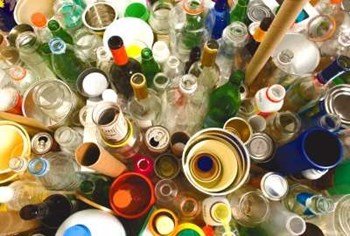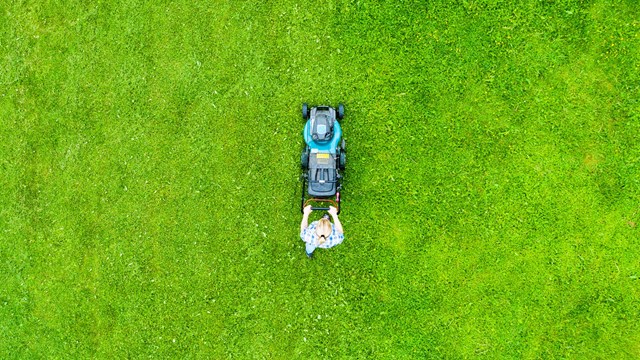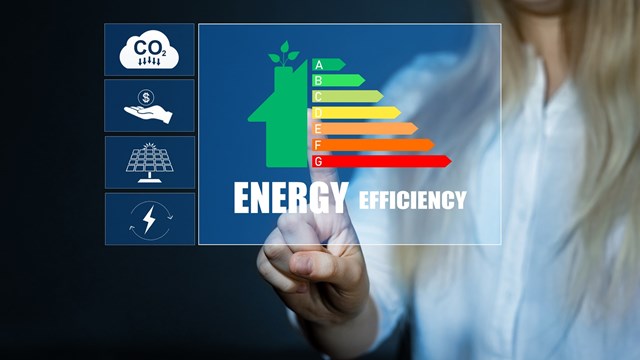
Every year thousands of tons of paper, metal and glass are recycled in New Jersey—and not just on behalf of state residents. The detritus gets broken down and turned into hundreds of "post-consumer" products, then re-sold and re-used, and the process begins all over again. The demand for recycled materials is growing in leaps and bounds, and the economics are becoming as compelling as the environmental concerns. From the recycling bin to the store shelf, these materials are forming a closed loop that takes some of the strain off of our energy production and natural resource harvest.
Recycling Laws and Choices
"The way it's written in New Jersey, it is mandated that [every residential and commercial facility] must recycle, and then it leaves the materials that they must recycle up to the county and the municipality," says Marie Kruzan, executive director of the Association of New Jersey Recyclers. "They must collect three, but which three, and if there are more than three, the county and municipality determine according to the demand."
The demand? Yep, recycling is not just a moral cause for tree-hugging hippies; the specific types of materials that are collected are dictated by which ones can be sold to be used again in "new" products. "There has to be a place to send it and use it," continues Kruzan. "Once you figure out what market there is for these materials you can figure out what to collect."
In Morris County, for example, the list of mandated recyclable materials includes: corrugated cardboard, mixed paper, newspapers, aluminum cans, steel (tin) cans, glass bottles and jars, plastic bottles (1 and 2) which excludes yogurt cups, deli cups and the like, batteries, motor oil, appliances, tires, oil-contaminated soil, yard waste and tree stumps.
"Each municipality has a choice as to how to run their program," adds Liz Sweedy, a recycling specialist for Morris County. "We have 15 municipalities that participate in our curbside recycling program." Some programs have trucks that come by to collect materials, and some require materials to be brought to recycling depots.
From the Bin to the Shelf
The journey from the recycling bin to the sales shelf is a fairly simple one: the homeowner or business separates it from solid waste. It is picked up and taken to a facility where it is separated into its component parts. Then it is shipped to an end market, a smelter in the case of aluminum cans, made again into a can, and then shipped to a brewery or beverage manufacturer that then fills it. From there it is delivered to the store.
The sorting process that happens at materials recovery facilities is a mechanized process, says Kruzan. "There are two major streams: a fiber stream, which is cardboard and paper, and a co-mingled stream, which is bottles and cans. Metal is removed by magnets, and plastic is blown off by air, then sorted by hand."
Next, they are densified for transportation, in a process called bailing. "They are compressed into very heavy units, weighing up to 1,200 lbs., that can be shipped in an 18-wheeler," says Kruzan. "It is then sold by weight. After that, it is taken to a market that can make it into its new form."
Various materials have different degrees of resiliency and need different levels of energy to be used in new products. "An aluminum can is 100 percent recyclable; it has no degradation," says Kruzan. "One can will make another. Plastic is melted down into a little pellet. Then they inject it into a mold or they use a blower to make another bottle. Paper is pulverized into a pulp."
Where the materials go for their next incarnation is sometimes further than one might think. "It depends on the materials," says Kruzan. "If there is no maker, or market for the material in the state, the material will go to another state, if allowed by transportation costs. There aren't really state lines when it comes to dealing with recycled materials."
The closest "green" glass mill to New Jersey is in Georgia, for example. The cost of transporting and making glass is furthering the use of more plastic containers.
New products are often made seasonally, making it hard to track the time it takes for materials to complete a recycling life cycle. For example, summer sees many more beverage bottles sold, meaning that the spring is a time of stepped-up production. The entire journey could be done in less than a week, however, from the recycling bin to the store shelf.
The Products
The list of products that use recycled materials is a long one, and it is growing as new products emerge from the recycling industry. "Plastic will go into making plastic lumber, one of the fastest growing industries," says Kruzan, "and even into making railroad ties. They can even make bridges and I-beams out of it. Plastic bags from the store can be made into these products."
"As far as paper goes," adds Sweedy, "corrugated cardboard can be made into new corrugated cardboard. Chipboard can be made into cereal boxes and shoeboxes. Newspaper can also be remade into new newspaper. Items like plastic bottles aren't always used to make new bottles, however. At the Marcal Paper Mill, the junk mail mix gets made into tissue products, paper towels and such."
Some things that we recycle don't typically end up on the curb or in a depot, however, and are not remade into things that we buy on shelves. New Jersey generates roughly 8.5 million tires per year, says Guy Watson, of the New Jersey Bureau of Recycling & Planning. "The vast majority are processed for fuel in cement kilns or used as a substitute for coal. Tires are also used as a low-weight fill in construction, and crumb rubber can be used in asphalt, giving it added elasticity. It also cuts down on road noise, making it softer, and extending the useful life of asphalt. However, it does increase the cost, so those elements are being weighed currently by the Department of Transportation."
Batteries from cars and from electronics are also recycled. "Any place that sells them has to take auto batteries back," says Watson. "We don't mine lead in this country anymore, so the recycled lead is our primary source now."
The alkaline batteries that are used in toys and electronics used to have mercury in them. "That has been removed," continues Watson, "eliminating the environmental poison. They can still be recycled for their steel content, however. The Portable Rechargeable Battery Corporation was set up by the industry, and the law, which started in New Jersey and then became a federal law, requires that those who sell them must take them back."
Notable Ventures
Some recycled materials are in extremely high demand, says Watson. "Some of the metals and paper grades are at historic highs, due to expanding markets overseas, notably China and India, where goods are being made and need boxes for shipping."
People and businesses have jumped on the bandwagon in a big way, says Kruzan. "What you are seeing in business is a call to reuse things: Rite-Aid has a program where it brings all its supplies to its stores in collapsible plastic containers. The store empties the materials, the crates collapse, and they go back with the trucks. And then they are reused again."
"Dell recently announced a partnership with Goodwill, where stores would accept any brand of computers for free for recycling," adds Watson. "Staples and Hewlett-Packard also have programs."
Multi-Family Concerns
Condos and co-ops tend to drop the ball when it comes to recycling, it seems, and there are a couple of reasons for this. "Partly it's that sometimes people take things for granted and don't concern themselves with the amount of solid waste that we all generate," says Sweedy. But laziness is only part of the issue. "I think a lot of people don't understand that just in energy and natural resources there's a huge savings when we make products by recycling."
Another reason is that boards and managers sometimes get the cue from their sanitation departments that there is no need for special attention, says Kruzan. "There are lots of haulers that will come in and say 'don't worry about it, we will collect it and separate it later,' but that is against the law. It has to be source separated." If you add a recycling program, you need to adjust the solid waste program, because there is a lot less waste. A hauler is not going to tell you that. The same pot of money needs to be used for both, but they will not tell you that the solid waste will cost less to haul by volume."
This can mean substantial savings, adds Watson, who is on the board of directors of his own homeowners' association. "If you can downsize the containers or amount of garbage picked up, or reduce the frequency of pickup, it will save the association money. Because we were taking out the big volume materials, we had our solid waste pickup reduced by a third. It translated into a greater than one-third savings. Some of the savings are in the property taxes."
What about cleanliness? "Rinsing is mostly about hygiene," says Kruzan. "Less bugs, less smell, etc. The process of melting down the materials will remove any labels or leftover film residue."
"The perception is that recycling storage attracts vermin," adds Watson. "The reality is that all garbage attracts vermin."
Of special note to HOA members: "There are a number of building products and recycled content products that can be used for many building projects," says Watson. "For example plastic lumber can be used to replace railings or other wooden fixtures. The initial cost is slightly higher, but you have no maintenance, no bugs and no deterioration. Termites do not eat plastic. Weather does not affect the color. These materials are available in home improvement stores."
Any questions about recycling programs should be directed to local municipalities first, and then to county programs. Boards should feel free to reach out to them. "They are very interested in assisting multifamily dwellings," Sweedy says.
Denton Tarver is a freelance writer, teacher and professional gardener living in New York City.






Leave a Comment